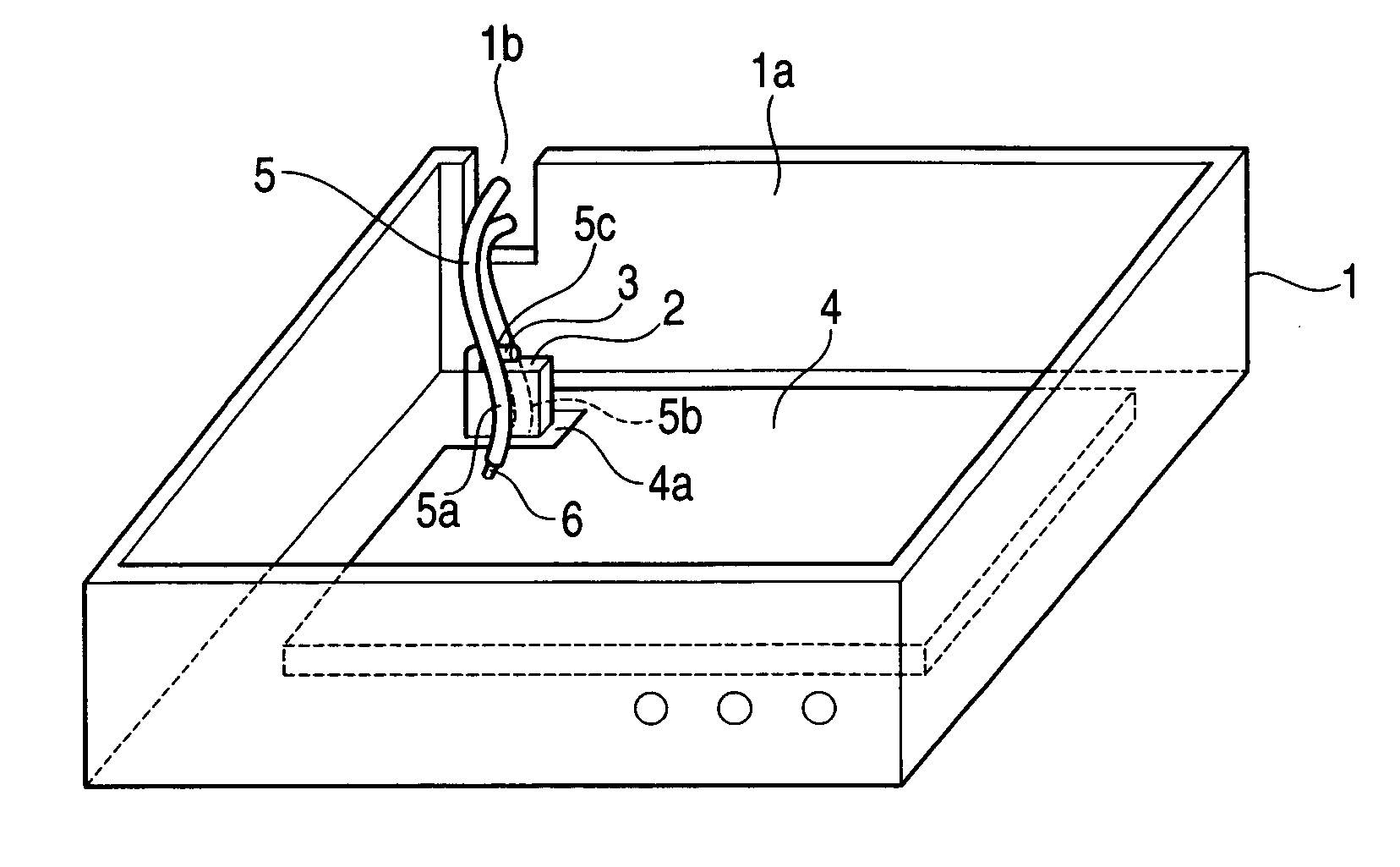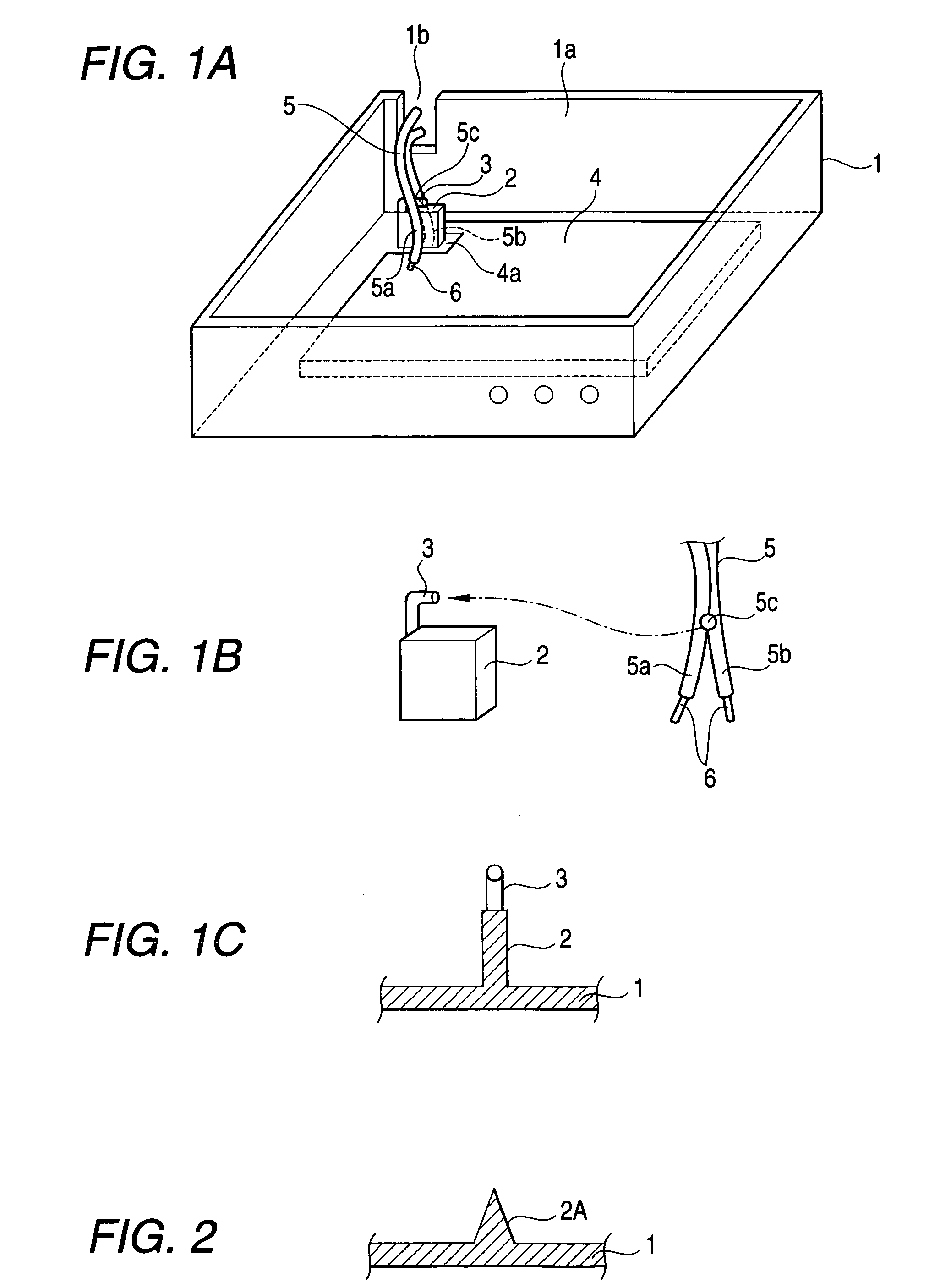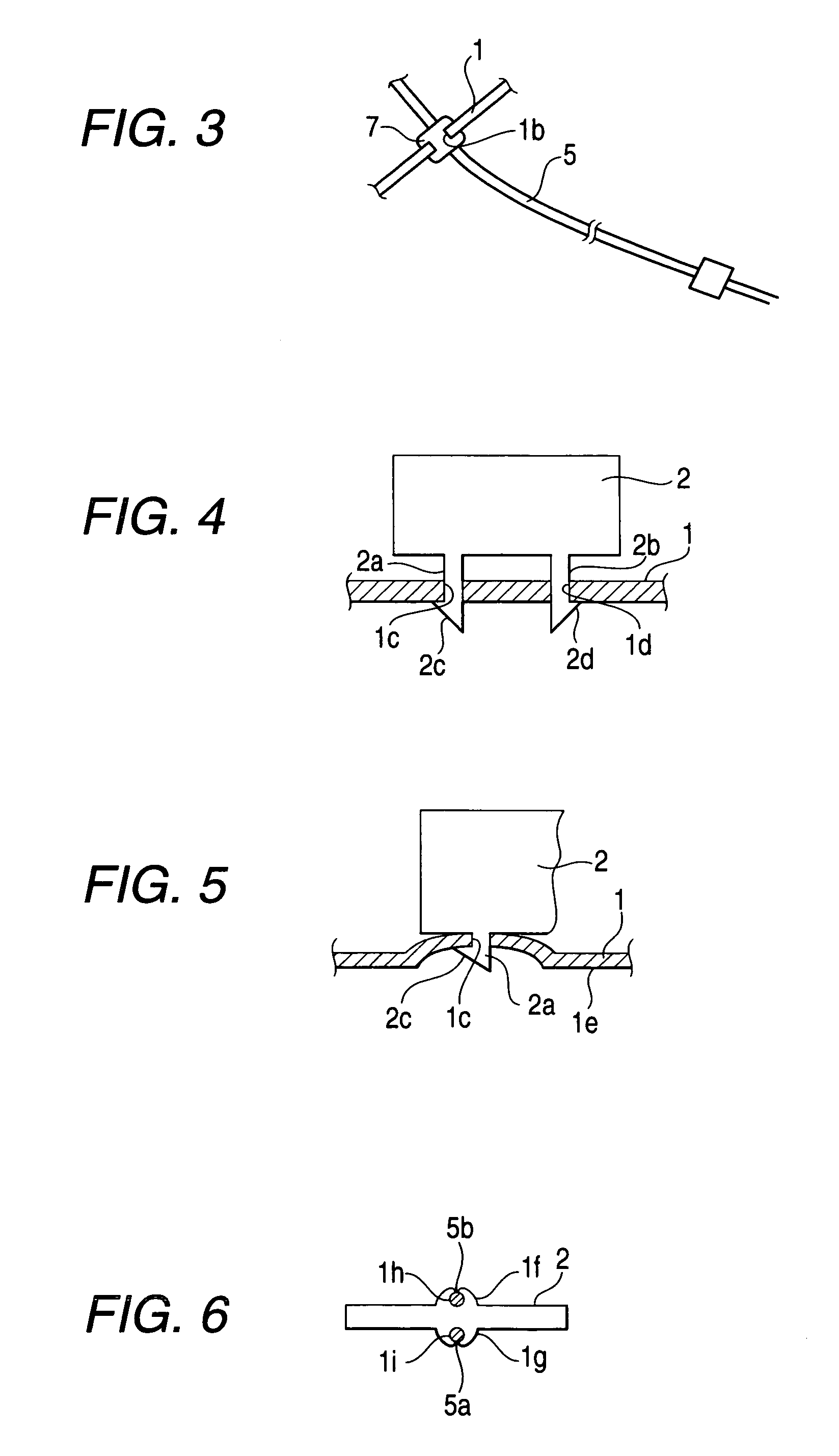Connecting structure for power cord
a technology of connecting structure and power cord, which is applied in the direction of printed circuits, casings/cabinets/drawers, electrical apparatus casings/cabinets/drawers, etc., can solve the problems of copper wire bundle breaking, short circuit, and difficulty in soldering work
- Summary
- Abstract
- Description
- Claims
- Application Information
AI Technical Summary
Benefits of technology
Problems solved by technology
Method used
Image
Examples
first embodiment
[0038]FIG. 1A is a perspective view of a general structure of connecting structure for the AC cord in a first embodiment according to the invention, FIG. 1B is an exploded perspective view of an essential part thereof, and FIG. 1C is a sectional view of the essential part.
[0039] In the connecting structure for the AC cord in this first embodiment, a case body 1 formed of synthetic resin has a small wall part 2 which is integrally formed at a determined position of the case body 1 so as to protrude upwardly. The small wall part 2 is provided with a locking piece 3 in a substantially L-shape, at an upper end thereof. A circuit board 4 is formed with a cut groove 4a at a position corresponding to the small wall part 2, and the small wall part 2 is inserted into the cut groove 4 in the circuit board 4 when the circuit board 4 is arranged inside the case body 1. Moreover, an AC cord 5 which has entered into the case body 1 through a slit 1b formed in a side wall 1a of the case body 1 is ...
second embodiment
[0041]FIG. 2 is a sectional view showing an essential part of the connecting structure for the AC cord in a
[0042] In the connecting structure for the AC cord in the second embodiment, the case body 1 is formed of synthetic resin, and the small wall part 2A is formed at a determined position of the case body 1 integrally and in a pointed shape directed upwardly, as shown in FIG. 2.
[0043] Therefore, according to this second embodiment, because the small wall part 2A is formed in a pointed shape, the bifurcated portions 5a, 5b of the AC cord 5 can be extended along inclination of the pointed shape of the small wall part 2A.
[0044]FIG. 3 is a plan view showing a part of a holding mechanism for the AC cord.
[0045] In this holding mechanism for the AC cord, a locking member 7 which is provided on a halfway of a shielded area of the AC cord 5 and has grooves on its outer periphery is inserted into the slit 1b of the case body 1, as shown in FIG. 3.
[0046] Therefore, by inserting the locki...
third embodiment
[0047]FIG. 4 is a sectional view showing an essential part of the connecting structure for the AC cord in a
[0048] In the connecting structure of the AC cord in the third embodiment, the case body 1 is formed of metal, and the small wall part 2 is provided with a pair of leg portions 2a, 2b, in a lower part thereof, as shown in FIG. 4. Locking hooks 2c, 2d are formed at lower ends of these leg portions 2a, 2b. The case body 1 is provided with locking holes 1c, 1d into which a pair of the leg portions 2a, 2b of the small wall part 2 are inserted, so that the locking hooks 2c, 2d can be locked to a lower face 1e of the case body 1.
[0049] Therefore, according to this third embodiment, because the locking hooks 2c, 2d of a pair of the leg portions 2a, 2b of the small wall part 2 are inserted into and locked to the locking holes 1c, 1d which are formed in the case body 1 formed of metal, the small wall part 2 will not be detached nor inclined, and the AC cord 5 can be safely insulated.
PUM
 Login to View More
Login to View More Abstract
Description
Claims
Application Information
 Login to View More
Login to View More - R&D
- Intellectual Property
- Life Sciences
- Materials
- Tech Scout
- Unparalleled Data Quality
- Higher Quality Content
- 60% Fewer Hallucinations
Browse by: Latest US Patents, China's latest patents, Technical Efficacy Thesaurus, Application Domain, Technology Topic, Popular Technical Reports.
© 2025 PatSnap. All rights reserved.Legal|Privacy policy|Modern Slavery Act Transparency Statement|Sitemap|About US| Contact US: help@patsnap.com



